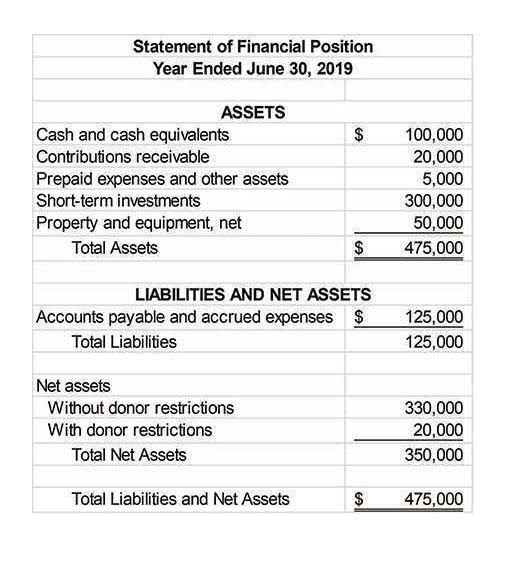
Fundamentally, all liquidity ratios measure a firm’s ability to cover short-term obligations by dividing current assets by current liabilities (CL). The cash ratio looks at only the cash on hand divided by CL, while the quick ratio adds in cash equivalents (like money market holdings) as well as marketable securities and accounts receivable. The current ratio measures a company’s ability to pay its short-term financial debts or obligations.
What Are Current Liabilities?

Similar to business applications, liquid assets in personal finance are utilized to meet financial obligations as soon as possible. In addition, they are also used to protect a personal investment position against unanticipated adverse events. A company’s financial statements—balance sheet, income, liabilities in order of liquidity and cash flow statements—are a key source of data for analyzing the investment value of its stock. Stock investors, both the do-it-yourselfers and those who follow the guidance of an investment professional, don’t need to be analytical experts to perform a financial statement analysis.
- Solvency, on the other hand, is a firm’s ability to pay long-term obligations.
- For companies that have loans to banks and creditors, a lack of liquidity can force the company to sell assets they don’t want to liquidate in order to meet short-term obligations.
- Comparing the liquidity ratios of different companies may not always be comparable, fair, or truly informative.
- An operating cycle, also referred to as the cash conversion cycle, is the time it takes a company to purchase inventory and convert it to cash from sales.
- The solvency ratio is calculated by dividing a company’s net income and depreciation by its short-term and long-term liabilities.
- Liquidity ratio analysis is less effective for comparing businesses of different sizes in different geographical locations.
- A liquid asset is cash on hand or an asset other than cash that can be quickly converted into cash at a reasonable price.
AUD CPA Exam: Understanding the Differences Between SOC 1 and SOC 2 Engagements

A non-financial example is the release of popular products that sell-out immediately. GoCardless helps you automate payment collection, cutting down on the amount of admin your team needs to deal with when chasing invoices. Find out how GoCardless can help you with ad hoc payments or recurring payments.
Understanding the ratios
- Companies may also have obligations due from customers they’ve issued a credit to.
- The result is that most banks now try to forecast their liquidity requirements and maintain emergency standby credit lines at other banks.
- On the other hand, low-volume stocks may be harder to buy or sell, as there may be fewer market participants and therefore less liquidity.
- They may have to sell the books at a discount, instead of waiting for a buyer who is willing to pay the full value.
- GoCardless helps you automate payment collection, cutting down on the amount of admin your team needs to deal with when chasing invoices.
Changes in balance sheet accounts are also used to calculate cash flow in the cash flow statement. For example, a positive change in plant, property, and equipment is equal to capital expenditure minus depreciation expense. If depreciation expense is known, capital expenditure can be calculated and included as a cash outflow under cash flow from investing in the cash flow statement. Creditors are typically more willing to lend money to companies that have more liquid assets because they are less risky.

- Assets like stocks and bonds are very liquid since they can be converted to cash within days.
- The current ratio is used to provide a company’s ability to pay back its liabilities (debt and accounts payable) with its assets (cash, marketable securities, inventory, and accounts receivable).
- Current assets represent all the assets of a company that are expected to be conveniently sold, consumed, used, or exhausted through standard business operations within one year.
- If depreciation expense is known, capital expenditure can be calculated and included as a cash outflow under cash flow from investing in the cash flow statement.
- Companies typically select an ending period that corresponds to a time when their business activities have reached the lowest point in their annual cycle, which is referred to as their natural business year.
- Company stocks traded on the major exchanges are typically considered liquid.
Miranda is completing her MBA and lives in Idaho, where she enjoys spending time with her son playing board games, travel and the outdoors. We can draw several conclusions about the financial condition of these two companies from these ratios. For example, some companies will list Accounts Payable as the first current liability account.
Order of Liquidity of Current Assets: Balance Sheet Example
For the past 52 years, Harold Averkamp (CPA, MBA) has worked as an accounting supervisor, manager, consultant, university instructor, and innovator in teaching accounting online. The order of liquidity is important for businesses because it provides a framework for making investment decisions. The order is important because it reflects which assets you are going to use in order to pay liabilities.
How the Balance Sheet is Structured

For example, a company may have the cash immediately on hand but also owe money to creditors in the form of current liabilities. The order of liquidity for assets on a balance sheet is the order in which assets are listed from the most liquid asset to the least liquid asset. Generally, sales growth, whether rapid or slow, dictates a larger asset base—higher levels of inventory, receivables, and fixed assets (plant, property, and equipment).